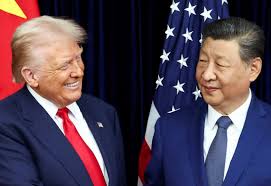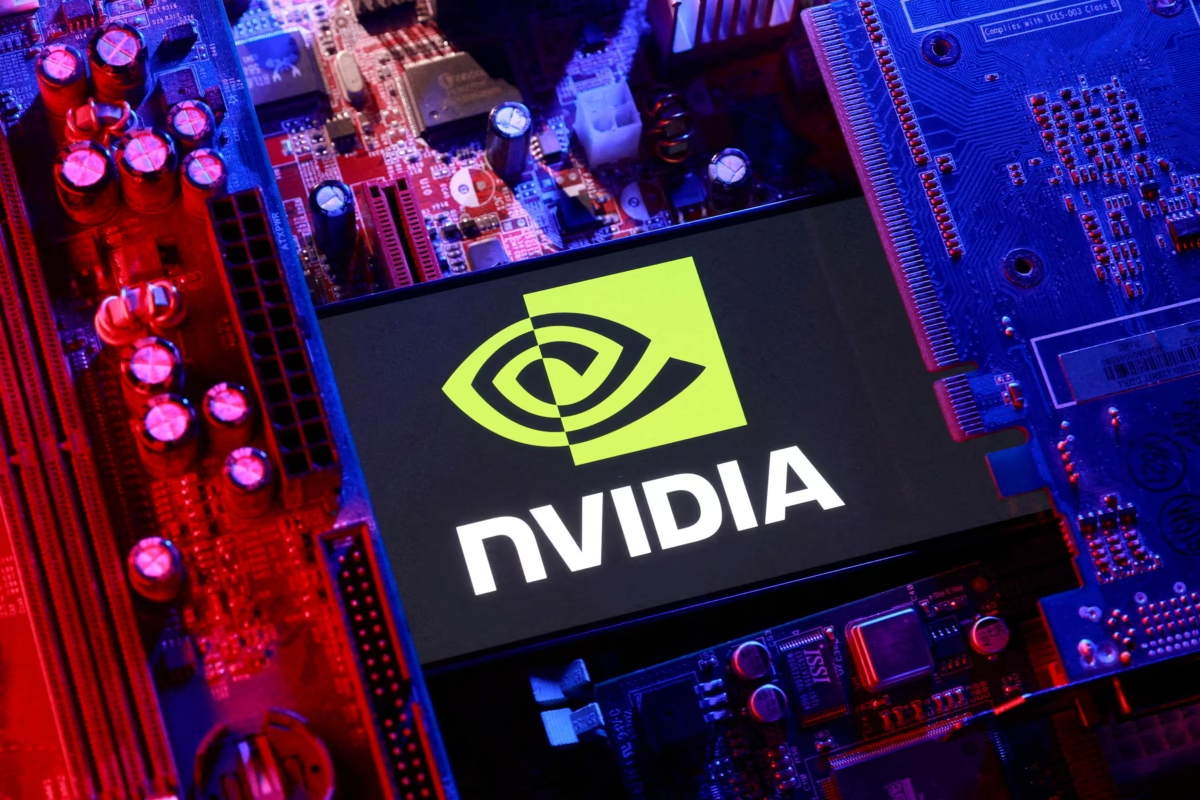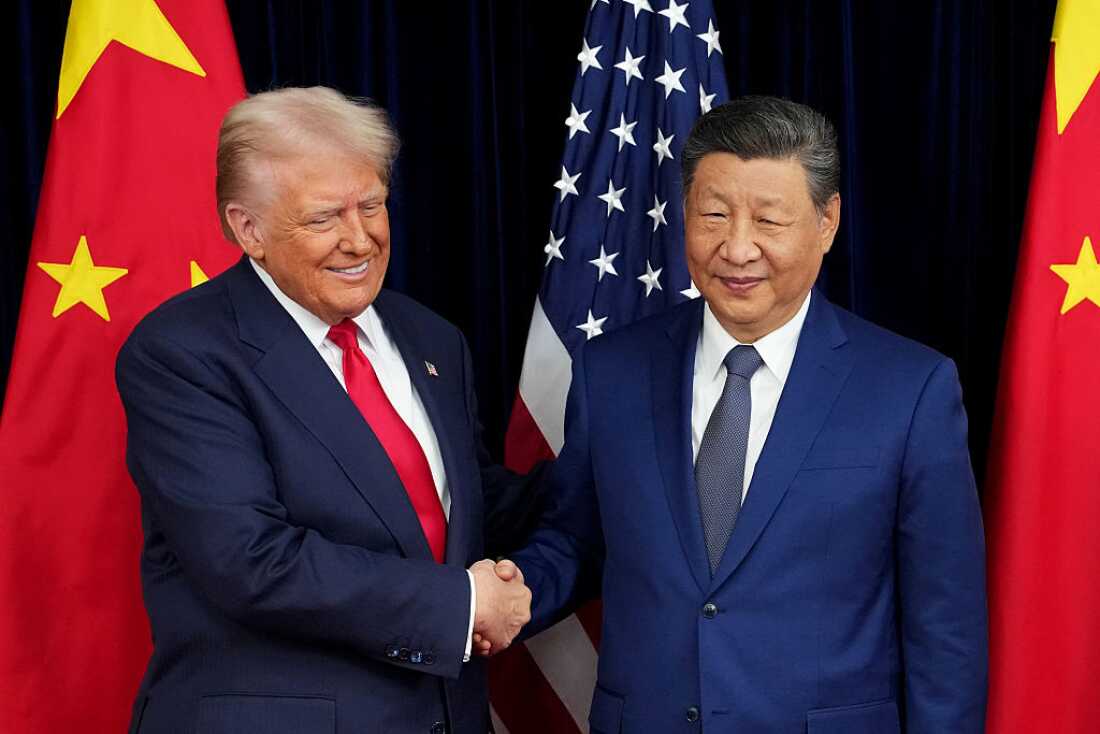Markets wobble as Trump-Xi Pact sparks global ripples: Microsoft, Google, and Nvidia lead tech power surge amid fed uncertainty

Global markets slipped into cautious territory on Thursday following a whirlwind 48 hours of financial and political developments that kept traders on edge. From Washington to Wall Street, investors digested a potent mix of geopolitics, corporate earnings, and monetary policy cues — with the spotlight firmly on U.S. President Donald Trump’s meeting with China’s President Xi Jinping and the Federal Reserve’s tempered stance on future rate cuts.
The Dow Jones futures slid 0.3% early Thursday, while S&P 500 and Nasdaq 100 futures also trended lower after the much-hyped Trump-Xi meeting in South Korea. The 10-year Treasury yield nudged upward to 4.08%, reflecting investor uncertainty about inflation and interest rate direction.
Trump and Xi’s “Outstanding” Meeting Stirs Market Reaction
President Trump called his meeting with Xi Jinping “amazing” and “outstanding,” signaling progress in rekindling U.S.-China trade ties. The two leaders reportedly agreed to halve the fentanyl tariff to 10%, with Beijing pledging to resume soybean imports and pause rare earth export restrictions for one year — a relief for global supply chains.
Trump also hinted at a potential trade pact “very soon” and confirmed he plans to visit China in April. However, his remarks about Nvidia’s AI chips added a layer of intrigue. While he ruled out immediate approval for exporting the Blackwell AI GPU to China, discussions about “some chips” being approved fueled speculation in the semiconductor market.
This development followed Nvidia’s record-breaking rise, as the chipmaker became the first company in history to hit a $5 trillion market valuation on Wednesday — a feat that underscored its dominance in the global AI revolution.
Tech Giants Shine Amid Volatility
Earnings reports from Silicon Valley’s heavyweights helped steady the markets despite broader weakness.
Microsoft (MSFT) and Alphabet (GOOGL) both beat analyst expectations, with robust cloud growth from Azure and Google Cloud, respectively. Meta Platforms (META), while grappling with a one-time tax charge, reported revenue growth and announced bigger capital expenditure plans for 2026.
Microsoft revealed plans for accelerated capital investments in AI infrastructure, while Meta signaled “notably larger” capex in the coming year — moves that reinforced the ongoing arms race for AI supremacy.
Despite the upbeat earnings, Meta’s stock dipped below its 50-day moving average, while Google shares surged to an all-time high. Microsoft’s shares slipped modestly before the market open, hovering near a key technical buy point.
Meanwhile, Nvidia’s (NVDA) shares retreated slightly after a historic rally, with investors locking in profits.
Fed Keeps Rates Steady, But Powell Cautions on Cuts
The Federal Reserve’s rate decision added another layer of tension. While policymakers held interest rates steady as expected, Fed Chair Jerome Powell warned that a December rate cut was “far from a done deal,” emphasizing diverging opinions within the central bank.
Markets initially reacted with optimism but reversed course after Powell’s comments, which injected uncertainty into an already volatile session. The Dow Jones slipped 0.15%, the S&P 500 barely changed, and the Nasdaq managed a modest 0.55% gain — largely driven by Nvidia and Alphabet.
Global and Sector Reactions
Beyond U.S. borders, Asian and European markets reacted cautiously to Trump’s remarks. The dollar strengthened against the yen, while oil prices rose slightly to $60.48 per barrel.
Sector-wise, tech stocks led gains, but financial and healthcare shares lagged. The Energy Select SPDR ETF (XLE) rose 0.7%, while the Financial Select SPDR ETF (XLF) fell 1.7%.
Among the earnings standouts were Eli Lilly, which beat profit estimates, and ServiceNow, which gained in premarket trading. However, eBay and Carvana disappointed investors, dragging down parts of the consumer sector.
Analyst Outlook: Volatility Ahead
Market analysts warn that while the Trump-Xi meeting may ease trade tensions, investors should brace for short-term volatility as details of the deal unfold. With central banks balancing inflation control and market stability, and with mega-cap tech stocks carrying much of the rally’s weight, the path ahead looks uncertain.
Investors are advised to remain flexible, avoid heavy positioning, and focus on quality growth stocks that demonstrate strong fundamentals and technical strength.
FAQ
1. Why did the markets fall after the Trump-Xi meeting?
While the meeting produced positive headlines, investors grew cautious about the limited scope of the trade concessions and the Fed’s warning against premature rate cuts.
2. How did tech companies perform in earnings?
Microsoft, Alphabet, and Meta all posted strong revenues, driven by cloud and AI investments, but their forward guidance varied — creating mixed reactions on Wall Street.
3. Is the U.S.-China trade war over?
Not yet. Although the meeting signaled progress, many tariffs remain, and discussions on high-end AI chip exports are still pending.
4. What does Nvidia’s $5 trillion valuation mean for investors?
It cements Nvidia’s position as the leader of the AI revolution, but analysts caution that the stock may be overextended in the short term.




